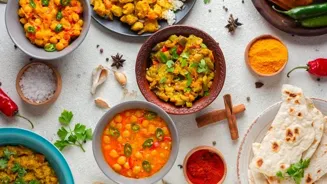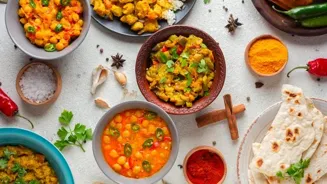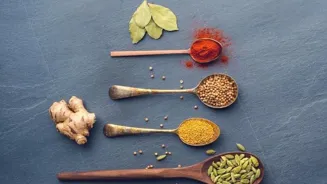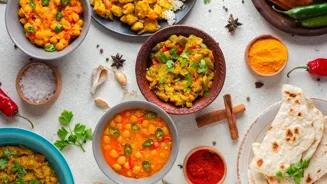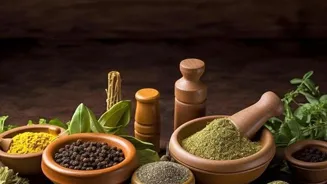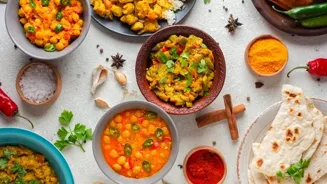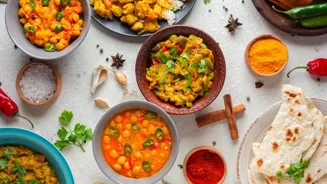Unveiling the World of Indian Spices: Essential Guide for Flavorful Cooking. Dive in for a spicy adventure!
India, a land of vibrancy and cultural richness, is also renowned for its incredibly diverse and flavourful
cuisine. At the heart of every delicious Indian dish lies a carefully curated selection of spices, transforming simple ingredients into culinary masterpieces.
Building your own Indian spice rack at home is surprisingly easy, and it opens up a world of exciting cooking possibilities. No need to be intimidated! This article will guide you through the essential spices you need to create a flavorful foundation for your Indian cooking journey.
From the warm embrace of turmeric to the aromatic allure of cardamom, let's embark on this spicy adventure together!
Indian spices like turmeric, cumin, and coriander are essential for flavorful dishes
First, let's talk about the must-haves, the spices that form the backbone of countless Indian recipes. Turmeric, with its vibrant yellow hue and earthy flavour, is not only a culinary staple but also boasts impressive health benefits.
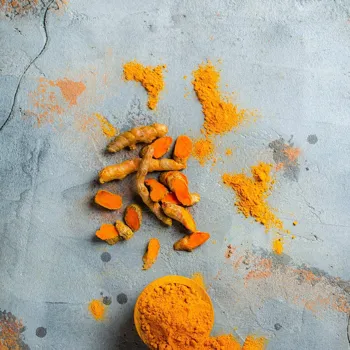
Cumin, available as both seeds and powder, offers a warm, slightly bitter flavour that enhances vegetarian curries and lentil dishes. Coriander, also versatile in seed and powder form, lends a citrusy and refreshing note, essential for balancing richer spices.
These three spices, turmeric, cumin, and coriander, create a trifecta of flavour that forms the basis for many Indian dishes, allowing for experimentation and customization based on regional preferences and personal taste.
Start with good quality whole spices whenever possible; they retain their flavour longer. For a faster and healthier start, go for buying organic products.
Indian cuisine's diverse spices create a tapestry of flavors
Next in line is the essential chilly component. Indian cuisine embraces a wide range of chillies, from the mildly warm to the fiery hot. Chilli powder is a staple, adding both heat and colour to dishes.
Different varieties of chillies offer distinct flavour profiles, so experiment to find your preferred level of spiciness. Garam masala, a blend of warming spices such as cinnamon, cloves, cardamom, and black pepper, adds depth and complexity to curries and stews.
Different families and regions have their own garam masala recipes, each with a unique blend of flavors. Mustard seeds, both black and brown, are commonly used in South Indian cooking, adding a nutty and pungent flavour when tempered in oil.
These spices create a tapestry of sensations on your tongue, giving you that 'Indian' feel.
Exploring flavorful spices like asafetida, fenugreek, and amchur for enhanced dishes
Moving on from the basic powders, Asafetida, also known as hing , has a pungent aroma and a distinctive flavour that mellows when cooked, adding a savory depth to lentil dishes and vegetable preparations.
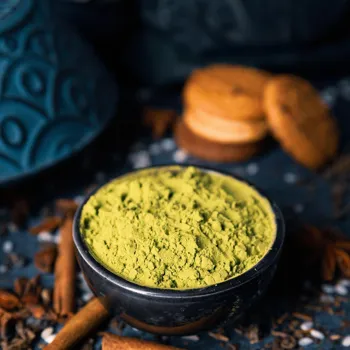
Fenugreek seeds, with a slightly bitter and maple-like flavour, are often used sparingly to add sweetness. Dried mango powder, or amchur, lends a tangy and fruity note to dishes, particularly in North Indian cuisine.
These spices elevate the flavor profile, adding subtle complexities, and depth to the overall taste. The best part? Once you learn to work with these flavors, you will realize what more you can add. Think of this as a delicious experiment.
Various spices like cardamom, cinnamon, cloves enhance dishes' flavor
After the essentials, there is more. Cardamom, both green and black, stands out as a fragrant spice. Green cardamom, with its sweet and floral flavor, is used in desserts and beverages, while black cardamom has a smoky and robust flavor that complements savoury dishes.
Cinnamon sticks, imparting a warm and sweet aroma, are often added to biryanis and teas. Cloves, with their pungent and slightly sweet flavor, are used whole or ground in various dishes. Bay leaves, added whole to broths and curries, infuse a subtle and aromatic flavor.
Nutmeg and mace bring a warm, nutty and fragrant flavour, especially for richer gravies or added luxury. If you are making a biryani, even just a vegetable biryani, adding these can boost the scent and flavour.
Source and store spices properly for freshness and flavor
Now, let's talk about where to source your spices and how to store them properly. Look for high-quality spices from reputable stores or online retailers. Opt for whole spices whenever possible, as they retain their flavour longer.
Freshly ground spices offer the most intense flavour, so consider investing in a small spice grinder. Store your spices in airtight containers in a cool, dark, and dry place. Protect them from direct sunlight, heat, and moisture, which can degrade their flavour and aroma.
Properly stored spices can last for several months to a year or more. To test for freshness, rub a small amount of the spice between your fingers; if it releases a strong aroma, it's still good to use. When possible, buy in small amounts so that you can ensure that you are buying fresh.
Exploring Indian spice rack for flavorful dishes; experiment, adjust, learn
Building an Indian spice rack is an ongoing journey of discovery and experimentation. Don't be afraid to try new spices and blends, and to adjust recipes to suit your personal preferences. Explore regional variations in spice combinations and cooking techniques.
Attending Indian cooking classes is one way to better orient yourself and learn Indian methods of cooking. Soon, you'll be creating your own flavorful Indian dishes with confidence. Remember, keep experimenting and keep trying.
The first few batches of meals might not be good initially or what you imagined, but you can improve with time. Good luck with starting your own spice journey!
AI Generated Content. Glance/InMobi shall have no liability for the content